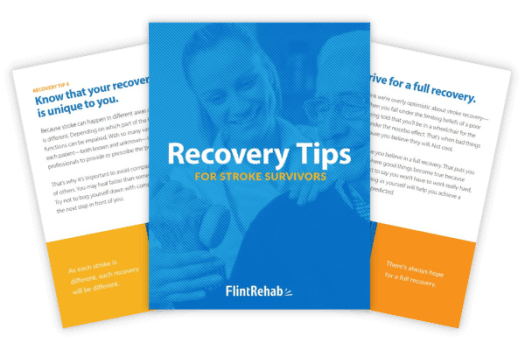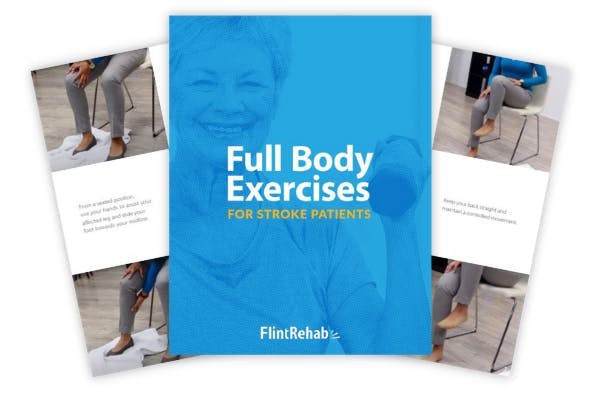No products in the cart.
No products in the cart.
No products in the cart.
No products in the cart.
Home » Neurological Recovery Blog » Stroke » Inflammation and Stroke: Breaking Down the Body’s Defense Mechanism
Last updated on October 10, 2022

Most individuals experience some degree of inflammation in the brain after a stroke. While inflammation can be alarming, it helps to understand why acute inflammation occurs and how it’s necessary to promote healing immediately following an injury.
However, when inflammation becomes chronic, or long-term, it can contribute to the development of potentially serious conditions and increase the risk of having another stroke. It can also be life-threatening depending on the location of the inflammation (either the brain or other areas of the body) and the severity of the injury.
Fortunately, inflammation can be reduced through lifestyle and dietary changes, which can also help lower the risk of recurrent stroke. This article will explore the connection between inflammation and stroke, and discuss how it can either be positive or negative depending on the circumstance. Furthermore, we will identify specific steps you can take to help reduce inflammation within your brain and body.
Use the links below to jump directly to any section of this article.
Inflammation is the body’s defense mechanism, and it is an important part of the healing process for all types of injury, including stroke. However, before discussing the correlation between inflammation and stroke, it helps to understand why inflammation occurs and what an inflammatory response entails.
Inflammation is the body’s immune response to harmful stimuli. Immune cells in the body release inflammatory mediators such as histamine and bradykinin. These mediators act as messengers, causing small blood vessels in the tissue to dilate (become wider). This allows more blood and inflammatory cells to reach the damaged tissue, making the inflamed area appear red and swollen.
The inflammatory cells then trap bacteria and other harmful substances, allowing the damaged tissue to heal. However, in addition to promoting tissue healing, the inflammatory response may also irritate the nerves and cause pain signals to be sent to the brain.
There are two main types of inflammation that can occur: acute inflammation and chronic inflammation. Acute (short-term) inflammation refers to a sudden response to body damage, such as cutting your finger. To help the wound heal, the body sends inflammatory cells to the site of injury. When the body continues to send out inflammatory cells even when there is no outside danger, it leads to chronic (long-term) inflammation.
This exact response takes place when an individual sustains a neurological injury like a stroke. When a stroke occurs, the body’s immune system automatically sends agents to repair the damage and fight off harmful substances. While this is a necessary step in the healing process, it can become potentially harmful in the long-term.
After a stroke, as blood flow is restored in the injured area, the inflammatory cells rush in as well. This can lead to the production of several reactive and toxic chemicals that cause additional tissue damage. While this strategy can be helpful in different areas of the body where damaged tissue can be replaced, the same cannot be applied to the brain.
This is because chronic inflammation in the brain can cause tissue that wasn’t deprived of oxygen during the stroke to become permanently damaged. While acute inflammation is helpful initially after a stroke, chronic inflammation in the brain can increase the risk for other medical conditions and even a second stroke.
Now that you understand the role of inflammation in the brain after a stroke, let’s discuss the consequences of inflammation in the body.
Inflammation in the body serves as a defense mechanism against infection and injury. However, poor lifestyle and dietary habits can lead to long-term bodily inflammation. When the body experiences inflammation for a long time, especially in vulnerable areas like the arteries, it can lead to chronic inflammation and increase the risk of stroke.
Arteries are blood vessels that deliver oxygen-rich blood from the heart to different parts of the body, including the brain. Inflammation causes the walls of the arteries to swell, making it difficult for blood to travel properly. Additionally, inflammation can cause blockages or aneurysms in the arteries, which can result in severe consequences such as heart attack or stroke. For example, when there is a blockage in a small artery that supplies blood to the deep parts of the brain, it can lead to a lacunar stroke.
Therefore, understanding the various factors that contribute to inflammation in the body is important to help you take the necessary precautions. With the proper care, you can lower the risk of chronic inflammation and a second stroke.
Although a degree of inflammation after a stroke is common in many individuals, there are ways to reduce the risk of developing chronic inflammation. This can include a combination of lifestyle and dietary changes. However, it’s important to consult with your doctor before adding or removing anything to ensure it is safe for you.
Here are some evidence-based recommendations to help you lower the risk of chronic inflammation after stroke:
Maintaining adequate cholesterol and glucose levels is essential to reduce the risk of stroke and chronic inflammation. High cholesterol is one of the leading causes of stroke. While a certain amount of cholesterol is necessary for the body, an excess can cause inflammation within the arteries. Similarly, certain amounts of glucose (sugar) are needed to fuel the body, but an excess can cause diabetes, another leading cause of stroke.
To manage your glucose and cholesterol levels, it’s important to get checked regularly with your doctor. If they suspect your levels are high, they may recommend making dietary changes such as decreasing the number of high sugar foods or saturated fats (such as butter, red meat, and white foods) that you consume.
Your doctor may also recommend increasing your fiber intake and adapting new lifestyle habits such as exercising daily. In some cases, medication such as insulin may be necessary to control cholesterol or glucose levels. Consult with your doctor first to see if the medication is right for you.
Many foods can contribute to high cholesterol or diabetes, which can increase the risk of stroke. Therefore, it’s important to learn what foods are appropriate to consume to lower the risk of stroke and inflammation. This can include a variety of anti-inflammatory foods such as different fruits and vegetables.
Anti-inflammatory foods may include:
While these foods can help you combat the risk of stroke and excess inflammation, it’s important to consult with your doctor and dietician. They can ensure you are eating a diet that is safe for your unique condition.
Lack of sleep can promote excess inflammation within the brain and body. Studies show that sleep deprivation can increase the levels of inflammatory mediators. While having a certain number of inflammatory cells is necessary to fight off infections and other diseases, having elevated levels of these mediators can lead to chronic inflammation and increase the risk of other diseases like high blood pressure.
To prevent this from happening, it’s important to get enough sleep every day, which can range from 7-9 hours every night. If daytime naps interfere with your ability to sleep through the night, it can help to limit naps in order to get a good night’s rest.
Additionally, if you struggle with sleep disorders such as sleep apnea, consult with your doctor to explore different treatments. They can help you achieve better quality sleep to reduce the risk of chronic inflammation and promote overall health.
Studies suggest that it may be more than lack of sleep that can cause inflammation. Inadequate rest can make you more susceptible to stress, which causes excess inflammation in the body. Because of this, stress is linked to an increased risk of stroke too.
There are various methods to help you manage your stress throughout the day such as yoga, meditation, and psychotherapy. To explore other options such as medication, it’s important to consult with your doctor to see what the right treatment is for you.
Chronic inflammation can cause insulin resistance, atherosclerosis, and a variety of other diseases. Fortunately, exercise provides anti-inflammatory long-term effects which can help survivors lower the risk of long-term inflammation.
Although it can be challenging to move after a stroke, it’s important to practice light exercise as much as possible to decrease inflammation. Be sure to consult with your doctor or therapist to see which exercises are safe for you. They can provide you with specific exercises or activities tailored to your level of ability.
While these tips can help you reduce the risk of chronic inflammation after a stroke, it’s important to consult with your doctor to find the best course of treatment.
Inflammation can occur during the onset of a stroke or in the aftermath. Although acute inflammation helps the healing process by sending out inflammatory cells to the site of injury, chronic inflammation in the body can increase the risk of stroke and other conditions.
Fortunately, there are many ways to reduce inflammation and lower the risk of stroke such as eating anti-inflammatory foods and maintaining adequate cholesterol and glucose levels.
We hope this article helped you understand the correlation between inflammation and stroke and what safety measures you can take.

Get our free stroke recovery ebook by signing up below! It contains 15 tips every stroke survivor and caregiver must know. You’ll also receive our weekly Monday newsletter that contains 5 articles on stroke recovery. We will never sell your email address, and we never spam. That we promise.


Do you have these 25 pages of rehab exercises?
Get a free copy of our ebook Full Body Exercises for Stroke Patients. Click here to get instant access.
“My name is Monica Davis but the person who is using the FitMi is my husband, Jerry. I first came across FitMi on Facebook. I pondered it for nearly a year. In that time, he had PT, OT and Speech therapy, as well as vision therapy.
I got a little more serious about ordering the FitMi when that all ended 7 months after his stroke. I wish I hadn’t waited to order it. He enjoys it and it is quite a workout!
He loves it when he levels up and gets WOO HOOs! It is a wonderful product! His stroke has affected his left side. Quick medical attention, therapy and FitMi have helped him tremendously!”
FitMi is like your own personal therapist encouraging you to accomplish the high repetition of exercise needed to improve.
When you beat your high score or unlock a new exercise, FitMi provides a little “woo hoo!” as auditory feedback. It’s oddly satisfying and helps motivate you to keep up the great work.
In Jerry’s photo below, you can see him with the FitMi pucks below his feet for one of the leg exercises:
Many therapists recommend using FitMi at home between outpatient therapy visits and they are amazed by how much faster patients improve when using it.
It’s no surprise why over 14,000 OTs voted for FitMi as “Best of Show” at the annual AOTA conference; and why the #1 rehabilitation hospital in America, Shirley Ryan Ability Lab, uses FitMi with their patients.
This award-winning home therapy device is the perfect way to continue recovery from home. Read more stories and reviews by clicking the button below:
Grab a free rehab exercise ebook!
Sign up to receive a free PDF ebook with recovery exercises for stroke, traumatic brain injury, or spinal cord injury below: